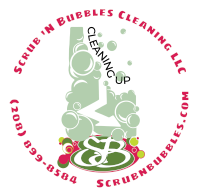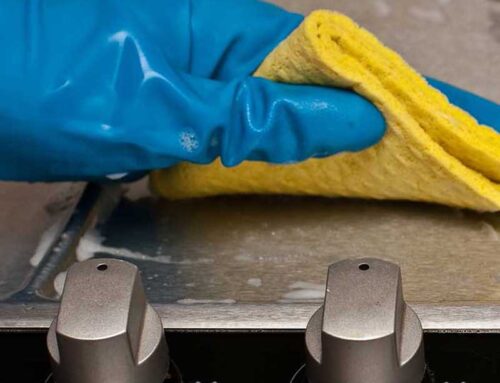Maintaining a clean and organized home is essential for a healthy and comfortable living environment. However, for busy professionals with limited time, finding the balance between work and household chores can be challenging. In this article, we will explore some time-saving tips and tricks that will help working individuals efficiently clean their homes without sacrificing their precious time.
The Importance of a Clean Home
A clean home offers numerous benefits, both physically and mentally. It reduces the risk of allergies, improves indoor air quality, and promotes overall well-being. Additionally, an organized living space enhances productivity, reduces stress, and provides a sense of calm and relaxation. Recognizing the importance of a clean home is the first step towards incorporating effective cleaning hacks into your busy schedule.
Planning and Scheduling Cleaning Tasks
To effectively manage your cleaning tasks, it’s crucial to have a plan and establish a cleaning schedule. Start by creating a checklist of all the cleaning tasks that need to be done regularly. Break them down into daily, weekly, and monthly chores, ensuring that each task receives adequate attention. Scheduling specific cleaning times in your calendar will help you stay organized and ensure that no task is overlooked.
Decluttering and Organizing
Before diving into the cleaning process, it’s essential to declutter and organize your living space. Clutter not only makes cleaning more time-consuming but also creates visual chaos. Begin by sorting and categorizing your belongings into different groups: keep, donate, or discard. Implement practical storage solutions, such as bins, shelves, and drawer organizers, to maximize your space and maintain a clutter-free environment.
Efficient Cleaning Supplies and Tools
Investing in the right cleaning supplies and tools can significantly streamline your cleaning routine. Stock up on essential cleaning products such as all-purpose cleaners, microfiber cloths, and non-toxic alternatives for a greener approach. Additionally, consider time-saving cleaning tools like robotic vacuums, steam mops, and extendable dusters, which can make cleaning more efficient and less time-consuming.
Streamlining Cleaning Processes
Cleaning your home room by room can be overwhelming, especially when time is limited. Adopting a top-to-bottom approach can help you tackle the cleaning process systematically. Start by dusting ceilings, light fixtures, and shelves, then work your way down to furniture, countertops, and floors. By focusing on one area at a time, you can maximize your efficiency and minimize distractions.
To further optimize your cleaning routine, embrace multitasking and time blocking techniques. For example, while waiting for the laundry cycle to finish, you can use that time to wipe down kitchen surfaces or dust furniture. Time blocking involves setting specific time slots for different cleaning tasks, allowing you to stay focused and avoid getting overwhelmed.
Establishing Cleaning Routines
Developing daily cleaning habits is crucial for maintaining a tidy home consistently. Incorporate small tasks into your daily routine, such as making the bed, washing dishes immediately after meals, and wiping down bathroom surfaces. Additionally, designate specific days for weekly and monthly cleaning tasks, such as vacuuming, mopping, and deep cleaning different areas of your home.
Outsourcing and Delegating
Recognize when it’s necessary to outsource or delegate cleaning tasks to others. Hiring professional cleaning services can be a time-saving solution, especially for deep cleaning or larger homes. Alternatively, if you live with family members or roommates, consider sharing responsibilities and creating a cleaning schedule that suits everyone’s availability.
Quick Cleaning Fixes
Sometimes, you may need to tackle cleaning tasks on short notice. For quick cleaning fixes, focus on spot cleaning areas that require immediate attention, such as spills, stains, or visible dirt. Keep essential cleaning supplies within reach, like wipes or a portable vacuum, to address these issues promptly. Additionally, develop emergency cleanup strategies for unexpected situations, such as unexpected guests or spills before an important event.
Tips for Cleaning Specific Areas
Different areas of your home require specific cleaning approaches. In the kitchen, utilize time-saving hacks such as using liners for easy cleanup, cleaning appliances with natural solutions like vinegar and baking soda, and decluttering countertops for a more organized workspace. For bathrooms, implement cleaning shortcuts like using a squeegee after showers, utilizing a toilet bowl cleaner with a built-in brush, and organizing toiletries in labeled containers.
When it comes to the living room and bedroom, focus on maintaining a clutter-free environment by regularly tidying up and organizing items. Make use of storage solutions such as ottomans with hidden compartments, under-bed storage bins, and wall-mounted hooks for hanging coats or bags.
Making Cleaning Fun and Motivating
Cleaning doesn’t have to be a tedious chore. Injecting some fun and motivation into the process can make it more enjoyable and help you stay engaged. Create a cleaning playlist with your favorite upbeat songs to keep you energized while tidying up. Additionally, reward yourself after completing specific cleaning tasks or milestones. Whether it’s indulging in a favorite treat or enjoying some relaxation time, these rewards can serve as a positive incentive.
Maintaining a Clean and Organized Home
Consistency is key when it comes to maintaining a clean and organized home. Establishing regular maintenance tasks will prevent dirt and clutter from accumulating, making future cleaning sessions more manageable. Incorporate habits such as regular dusting, vacuuming, and wiping down surfaces into your routine. Furthermore, implement preventive measures like using doormats to reduce dirt and implementing a shoe-free policy in certain areas.
Conclusion
As a busy professional, finding time for house cleaning can be challenging. However, by implementing these essential cleaning hacks and prioritizing your cleaning tasks, you can efficiently maintain a clean and organized home. Remember to plan and schedule your cleaning tasks, declutter and organize your space, utilize efficient cleaning supplies and tools, streamline your cleaning processes, establish cleaning routines, and make cleaning enjoyable. By following these tips and tricks, you can successfully balance your work and household chores while enjoying a clean and comfortable living environment.
FAQs
1. How often should I clean my house? It depends on various factors such as the size of your home, the number of occupants, and your personal preferences. However, a general guideline is to perform basic cleaning tasks daily or weekly and deep cleaning tasks monthly or quarterly.
2. Can I hire professional cleaning services on a one-time basis? Yes, many professional cleaning services offer one-time cleaning options to accommodate specific needs. Whether you need a thorough spring cleaning or assistance before a special event, hiring professionals can be a convenient solution.
3. Are natural cleaning products as effective as traditional ones? Yes, natural cleaning products can be just as effective as traditional ones, and they often offer the benefit of being eco-friendly and non-toxic. Ingredients like vinegar, baking soda, and lemon juice have powerful cleaning properties.
4. How can I motivate myself to clean regularly? Find ways to make cleaning enjoyable, such as listening to music or audiobooks while cleaning, rewarding yourself after completing tasks, or turning cleaning into a social activity by involving family members or roommates.
5. Can I maintain a clean and organized home with limited time? Yes, with proper planning, scheduling, and prioritization, even individuals with limited time can maintain a clean and organized home. Incorporating small cleaning tasks into your daily routine and utilizing time-saving strategies can make a significant difference.




